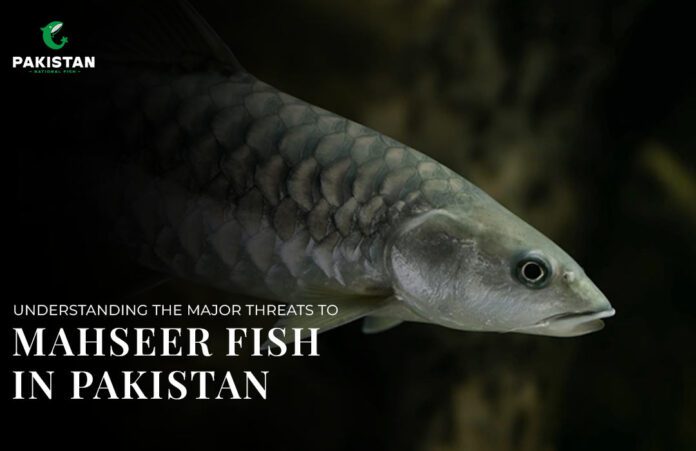Mahseer is an edible fish belonging to the Cyprinidae family of carps and the genus Barbus. The species of Mahseer fishes are commonly known as Tor, Neolissochilus, Naziritor, and Parator. Mahseer fish can be found in many freshwater rivers and lakes in Pakistan. Mahseer has wide jaws, thick scales, and strong teeth. Mahseer is a bottom-feeding species because of the way its lips have adapted to take in food at the bottom and are becoming more fleshy.
Mahseer fish can grow up to a maximum weight of roughly 90 kg and a height of two metres. Mahseer species can be found all along the Indus River. In Pakistan, mahseer fish hold significant commercial value as game fish. Mahseer species are a popular choice for fishing but nowadays, a lot of mahseer fish are struggling to live due to overfishing, damage to habitat, pollution threats, and the uncontrolled release of artificially bred stock.
Habitat Characteristics Of Mahseer Fish In Pakistan
The Mahseer fish is found mostly in freshwater habitats in Pakistan and has importance both environmentally and economically. The following are the primary characteristics of their habitat:

1. Temperature Range
2. Geographical Range
3. Migration Patterns
Golden Mahseers move in accordance with the weather and their physical attributes. In search of ideal spawning habitats, they migrate upstream under intense monsoon conditions. When fully grown, they inhabit lowland rivers and lakes.
Primary Threats To Mahseer Fish In Pakistan
The population of Mahseer fish, a species that was once prominent in the main river systems and the freshwater streams of Pakistan, is rapidly declining. This rapid decrease is caused by a number of factors, each of which presents a serious threat to the Mahseer’s survival.
1. Urbanization
Mahseer fish have less suitable places to live when natural habitats are displaced by urban environments. This leads the fish into smaller, more isolated pockets where survival becomes more difficult.
2. Illegal Encroachment
3. Overfishing
The populations of Mahseer have significantly decreased due to overfishing in Pakistan, which includes illegal and uncontrolled methods of fishing. Fish that are captured before they are fully grown are especially harmful because they break the natural life cycle of the species.
The adult breeding population is severely reduced by overfishing, which causes a sharp decline in the number of fish born annually. In many locations where Mahseer were once widespread, this illegal practice has made them almost rare.
4. Chemical And Physical Changes
Conclusion
The population of Mahseer fish in Pakistan is put at risk by a number of issues, including overfishing, pollution of aquatic ecosystems, habitat destruction from illegal encroachment and rapid urbanization. Mahseers are also at risk for health problems due to pollution from urban, agricultural, and industrial sources, which also damages their habitats. To lessen these risks and guarantee the survival of Mahseer fish in the freshwater ecosystems of Pakistan, immediate management action is required.


